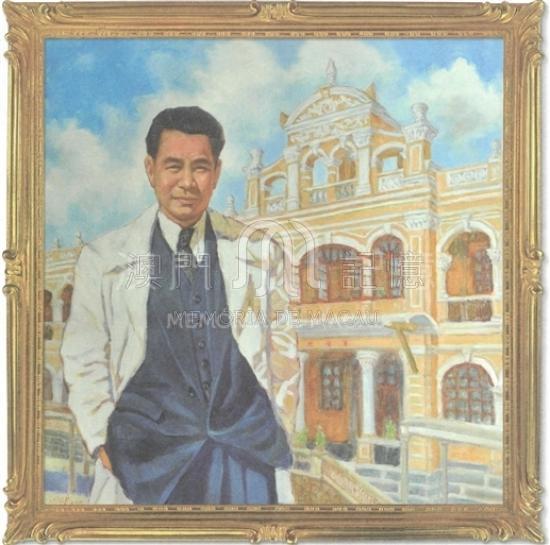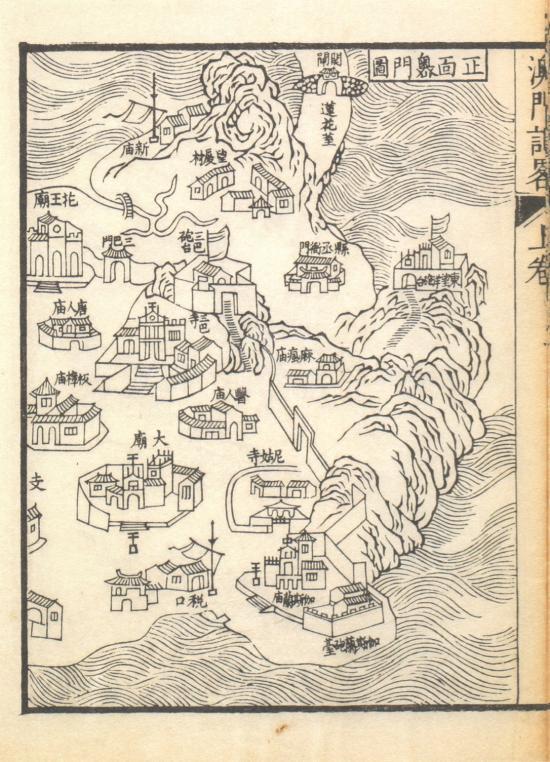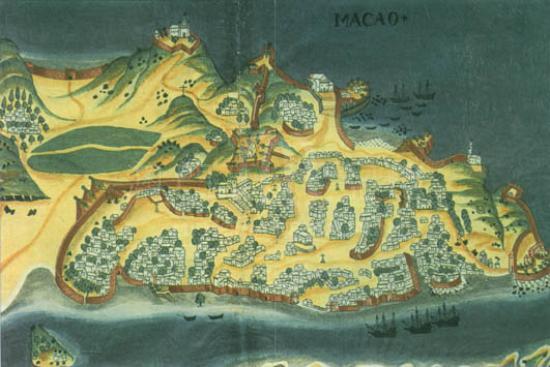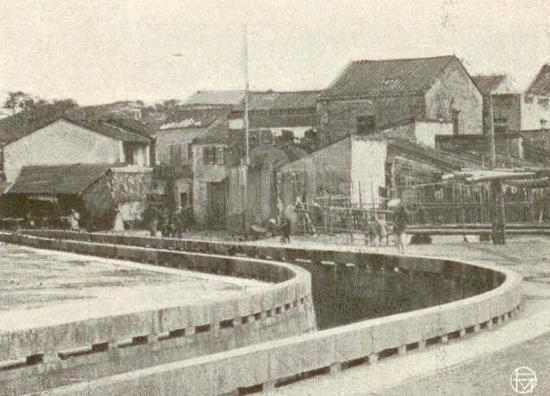This is a bird’s-eye-view ichnography of high precision about the coastlines, topography and essential facilities of Macau Peninsula. It is made with a proportion of 1:5000. The height of the mountain is expressed by contours. It successfully made precise and accurate descriptions on the inner structures of rows of streets and buildings. Fortress, barracks, hospitals, churches and other important architectures are painted bright red to stress their significances. Macau is marked as north latitude 22°11′ on the basis of Guia Fortress, and east longitude 113°33′ with Greenwich as prime meridian. The Fortress stands remarkable at the center of the map, with the outlines of its walls and sea-level height clearly put. On the top left, there is Ruinas de S. Pauls and its platforms and ladders. The map depicts the plane structures of inner city and also in details the houses, temples, villages and farming fields of the Chinese outside the host zones. Close to the north of Ruinas, one place with nearly the same area of Guina is marked as “Hospital China”, an antecedent of present Kiang Wu Hospital. The map is crisscrossed by streets and densely filled with architectures, demonstrating a real Macau in 1889, which is a precious material for studying the social environment of Macau at that time. The modern Macau exactly develops from what is shown by the map.
The map is a copy of Plan Map of the Peninsula of Macau by Antonio Heitor “G7823 .M2 1889 .H4” preserved in the Library of Harvard University.
Reference:
[1]. Sit, F. (2013). Macau through 500 years: Emergence and development of an untypical chinese city. Singapore: Silkroad Press, Enrich Professional Pub.
Informações relevantes
Data de atualização: 2019/02/27









Comentários
Comentários (0 participação(ões), 0 comentário(s)): agradecemos que partilhasse os seus materiais e histórias (dentro de 150 palavras).